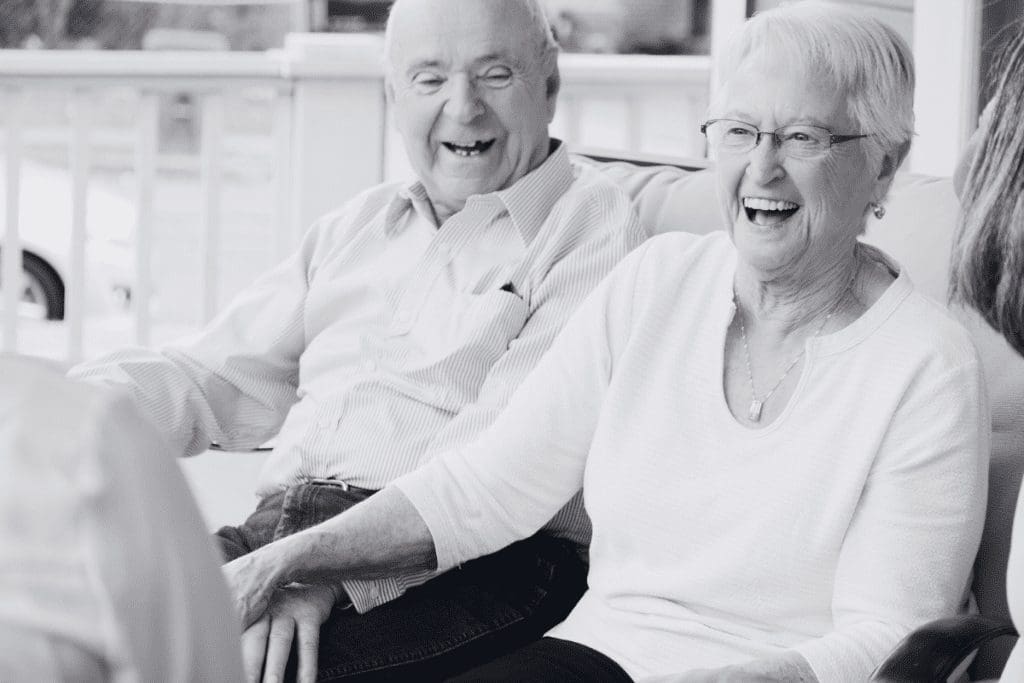As the global population grays faster than a baby boomer’s hairline, traditional models of retirement living are being put under the microscope. Senior co-housing is emerging as the shiny new alternative, addressing issues of loneliness, health deterioration, and the need for affordable, accessible housing. But is this communal living dream all it’s cracked up to be, or are we setting ourselves up for a geriatric Lord of the Flies scenario? This isn’t just another feel-good story about seniors finding harmony in shared spaces. It’s a hard look at whether the ideals of communal living can withstand the harsh realities of human nature, conflicting personalities, and the challenges of aging. As we peel back the layers of this complex issue, we’re confronted with an uncomfortable question: Is senior co-housing a utopian retirement solution or a recipe for conflict?
- The Siren Song of Communal Living: Unpacking the Co-Housing Promise
- From Hippie Communes to Gray Havens: The Evolution of Senior Co-Housing
- The Rose-Tinted Reality: Examining the True Costs of Community
- When Utopia Cracks: Navigating Conflicts in Close-Knit Communities
- Beyond the Brochure: Innovative Solutions for Co-Housing Challenges
- The Ethical Tightrope: Balancing Independence and Interdependence in Aging
Overview:
- Senior co-housing combines private living spaces with communal facilities to foster social interaction and mutual support.
- Over 160 co-housing communities exist in the U.S., including 17 specifically for seniors.
- 29% of co-housing residents meet with neighbors daily, compared to 14.9% in traditional senior housing.
- Co-housing residents report higher life satisfaction and better mental health outcomes.
- Challenges include balancing privacy with community engagement, potential conflicts, and issues of affordability and diversity.
- The success of co-housing depends on careful planning, management, and the ability to navigate complex social dynamics.
The Siren Song of Communal Living: Unpacking the Co-Housing Promise
Senior co-housing paints a picture so rosy it could make a romance novelist blush. Imagine a retirement where loneliness is banished, where your neighbors are your best friends, and where the spirit of community solves everything from health issues to the rising cost of living. It’s a siren song that’s hard to resist, especially when traditional retirement options often resemble purgatory with bingo.
The statistics are certainly seductive. In co-housing communities, 29% of residents meet with neighbors daily, compared to a paltry 14.9% in traditional senior housing. It’s like comparing a bustling Mediterranean piazza to a deserted strip mall. Co-housing residents report higher life satisfaction and better mental health outcomes, with 28% noting improvements in mental health after moving in. It’s enough to make you want to bulldoze the retirement homes and replace them all with communal utopias.
But here’s where it gets interesting: these communities aren’t just about sharing a cup of sugar or a gossip session over the fence. They’re intentionally designed to foster interaction, with private homes clustered around shared spaces like gardens, kitchens, and recreational areas. It’s architectural manipulation for the greater good, forcing social interaction whether you like it or not.
The promise goes beyond just combating loneliness. Co-housing dangles the carrot of affordability through shared resources and self-management. It’s the retirement equivalent of splitting the bill at a restaurant, except the bill is your entire life. And let’s not forget the sustainability angle – it’s easier to be green when you’re sharing everything from lawnmowers to electric cars.
But before you start drafting your co-housing manifesto, remember this: utopias have a nasty habit of revealing their cracks upon closer inspection. The question is, are we willing to risk our golden years on this grand social experiment?

If you could design your ideal retirement community, what shared facilities would you include? Share your ideas and see how they compare to existing co-housing models.
From Hippie Communes to Gray Havens: The Evolution of Senior Co-Housing
To understand how we’ve arrived at this brave new world of senior co-housing, we need to take a trip down memory lane – a lane that, surprisingly, leads us straight to 1960s Denmark. Yes, the same country that gave us Hans Christian Andersen’s fairy tales is also responsible for this latest chapter in the story of aging.
The co-housing movement began as a rebellion against the nuclear family model, with a group of Danish families deciding that it does, in fact, take a village to raise a child – or in this case, to create a fulfilling life. The first modern co-housing community, Sættedammen, was established in 1972, presumably after a lot of hygge and consensus-building over strong coffee.
The history of co-housing is a reflection of our societal values. As we’ve progressed, we’ve sought to recreate the village in our modern world.
Jan Gudmand Høyer, Danish architect and co-housing pioneer
Fast forward to the 1980s, and this radical idea crossed the Atlantic, taking root in the fertile soil of American individualism – because nothing says “I’m unique” quite like choosing to live in a community where everyone has a say in your business.
The first senior-specific co-housing community in the U.S., Glacier Circle in Davis, California, was established in 2005 by a group of friends from a Unitarian Church. One can only imagine the lively debates that must have preceded this decision. Since then, the movement has grown, with over 160 co-housing communities in the U.S., including 17 specifically for seniors.
This evolution from countercultural experiment to retirement trend reveals a fundamental truth: as we age, our need for community doesn’t diminish – it intensifies. The question is, can a model born out of 1960s idealism truly address the complex realities of 21st-century aging?
How has your ideal vision of retirement changed over the years? Share your perspective and see how others’ dreams of the ‘golden years’ have evolved.
The Rose-Tinted Reality: Examining the True Costs of Community
Let’s pull back the curtain on this co-housing utopia and examine the fine print, shall we? Because as with any paradise, there’s always a snake in the garden – or in this case, several snakes wearing cardigans and arguing over the thermostat settings.
First, let’s talk about the elephant in the communal room: cost. While co-housing promises affordability through shared resources, the initial buy-in can be steeper than a San Francisco hill. Many co-housing communities require residents to purchase their units outright, which can be a significant financial hurdle. It’s like paying for a timeshare, except instead of a week in Maui, you get a lifetime of community meetings.
Then there’s the ongoing cost of community. Those shared spaces don’t maintain themselves, and the organic community garden won’t fertilize itself (although I’m sure there’s a committee for that). Monthly fees can add up, and unlike a traditional retirement community, you’re not just paying for services – you’re paying for the privilege of having a say in every decision, from the color of the communal curtains to the brand of coffee in the shared kitchen.
Let’s not forget the hidden cost of time. Co-housing communities often operate on consensus-based decision-making models. While this sounds wonderfully democratic, in practice it can mean lengthy meetings and discussions about every minute detail of community life. Hope you didn’t have any hobbies planned for your retirement.
The true cost of co-housing isn’t just financial – it’s the investment of time, energy, and patience required to make a community work.
Dr. Sarah Bamford, Sociologist
Privacy, that precious commodity, is another potential casualty of the co-housing dream. While you have your own private space, the emphasis on community means you’ll likely be seeing a lot more of your neighbors than you ever did in your old neighborhood. Hope you like impromptu hallway chats and communal dinners, because they’re now part of your daily routine.
Lastly, there’s the cost to your autonomy. In a co-housing community, many decisions that you previously made independently are now subject to group approval. Want to paint your front door a daring shade of fuchsia? Better run that by the aesthetics committee first.

When Utopia Cracks: Navigating Conflicts in Close-Knit Communities
Ah, community living – where the dream of harmony meets the reality of human nature. It turns out that putting a group of strong-willed individuals together and asking them to agree on everything from meal plans to maintenance schedules is about as peaceful as a seagull fight over a french fry.
Conflict in co-housing communities can arise from the most mundane issues. The volume of someone’s television, the aroma of someone’s cooking, or the frequency of someone’s grandchildren visits can all become topics of heated debate. It’s like a homeowners’ association meeting, but you can’t escape it because these people are also your dining companions and de facto family.
Then there’s the challenge of balancing different levels of ability and involvement. As residents age, their capacity to contribute to community tasks may change. This can lead to resentment from those who feel they’re shouldering more of the burden. It’s a delicate dance of mutual support and individual responsibility, and not everyone has the moves to pull it off.
Personality clashes are inevitable in any community, but in a co-housing setup, they can take on epic proportions. That neighbor who chews too loudly at communal meals? In traditional housing, you might see them once a month. In co-housing, they’re at every dinner, slurping their soup with the gusto of a vacuum cleaner.
Conflict in co-housing communities isn’t a bug, it’s a feature. It’s through navigating these challenges that true community is forged.
Kathryn McCamant, co-housing pioneer
The consensus-based decision-making model, while admirable in theory, can be a breeding ground for conflict. When everyone has a say, every decision becomes a potential battleground. Want to change the brand of toilet paper in the common bathrooms? Prepare for a three-hour meeting and possibly a task force to study the issue.
And let’s not forget the elephant in the room – or rather, the elephant trying to squeeze into the room because the doorways weren’t designed for wheelchair access. As residents age, their needs change, and the community must adapt. This can lead to conflicts between those who want to modify the environment and those who resist change.
The irony is palpable: the very closeness that co-housing fosters can also be its biggest challenge. It’s a bit like family – you love them, but sometimes you also want to lock yourself in your room and pretend they don’t exist.
Share your most memorable neighbor dispute and how you resolved it. Then see how others have navigated conflicts in close-knit communities. Bonus points for creative (and legal) conflict resolution techniques!
Beyond the Brochure: Innovative Solutions for Co-Housing Challenges
Despite the potential for conflict and the challenges of communal living, the co-housing model isn’t going away. In fact, innovative solutions are emerging that could transform these communities from potential powder kegs into genuine havens for seniors.
Technology is at the forefront of many promising solutions. Imagine AI-driven facilitation tools that could streamline those endless consensus-building meetings. It’s like having a digital mediator that never loses patience and can’t be swayed by Edna’s famous apple pie.
Smart home technologies are also revolutionizing the co-housing landscape. From voice-activated assistants that can help with daily tasks to advanced health monitoring systems, technology could provide the support that allows seniors to age in place more comfortably. It’s like having a personal caregiver, minus the awkward small talk.
Community apps are another game-changer. These digital platforms can help coordinate support, share resources, and manage communal spaces more efficiently. Need help with groceries? There’s an app for that. Want to reserve the common room for your tai chi class? There’s an app for that too.
Financial innovations are also addressing the affordability issue. Some communities are exploring mixed-income models that make co-housing accessible to a more diverse range of seniors. Others are partnering with developers to create rental options, lowering the barrier to entry. It’s about time we had some socialist utopias that don’t require a capitalist’s bank account to join.
The future of senior co-housing lies in flexible, technology-enabled communities that can adapt to changing needs and preferences.
Dr. Michael Brown, digital health expert
Architectural innovations are also helping to balance the need for community with the desire for privacy. New designs incorporate soundproofing technologies and create “buffer zones” between private and communal spaces. It’s like having your cake and eating it too – you can join the community potluck, but you don’t have to hear your neighbor’s snoring through the walls.
Perhaps most importantly, there’s a growing recognition of the need for professional support in managing these communities. While self-governance is a core principle of co-housing, having trained facilitators and conflict resolution experts on hand can help navigate the trickier aspects of communal living.

Design your ideal high-tech co-housing solution. What innovations would you incorporate to address the challenges of communal living? Share your ideas and vote on the most promising solutions.
The Ethical Tightrope: Balancing Independence and Interdependence in Aging
As we navigate the complex landscape of senior co-housing, we find ourselves walking an ethical tightrope. On one side, we have the fundamental human need for connection and community. On the other, the equally important need for autonomy and self-determination. The question is, can co-housing truly balance on this wire, or are we at risk of a spectacular fall?
The ethical dilemmas inherent in co-housing are numerous and nuanced. There’s the question of privacy versus community engagement. How much of yourself are you obligated to share in these close-knit communities? Is it fair to expect seniors to sacrifice their privacy on the altar of social interaction?
Then there’s the thorny issue of decision-making and power dynamics. In a community where consensus is king, how do we ensure that quieter voices aren’t drowned out? Is there a risk of creating a tyranny of the majority, where individual needs are sacrificed for the perceived greater good?
The potential for exclusion is another ethical minefield. While co-housing communities often strive for diversity, the reality is that they can be economically and culturally homogeneous. Are we creating enclaves of privilege under the guise of community? And what happens to those who can’t afford the buy-in or don’t fit the community’s profile?
As residents age, the balance between self-reliance and community support becomes increasingly delicate. At what point does mutual aid turn into dependency? How do we respect the autonomy of individuals while ensuring their needs are met?
Perhaps the most profound ethical question is this: In our rush to solve the problems of aging – loneliness, lack of purpose, the need for support – are we inadvertently creating new problems? Are we trading one set of challenges for another, potentially more complex set?
The choices we make in addressing these ethical dilemmas will shape not just the future of co-housing, but our societal approach to aging. Will we create communities that truly honor the complexity of the human experience in later life, or will we end up with well-intentioned experiments that fall short of their lofty goals?
Participate in our ethical dilemma simulator. Make decisions about common co-housing scenarios and see how your choices impact both individuals and the community. Warning: There are no easy answers here!
Call to Action:
The senior co-housing movement is at a crossroads, and its future direction will be determined by the choices we make today. Here’s what you can do to be part of shaping this revolution in retirement living:
- Educate Yourself: Look beyond the glossy brochures. Understand both the benefits and challenges of co-housing before making any decisions.
- Visit Communities: Experience co-housing firsthand. Many communities offer stays for potential residents. It’s like test-driving a car, except the car is your entire future lifestyle.
- Advocate for Diversity: Push for co-housing models that are accessible to a wider range of seniors, regardless of economic status or background.
- Support Innovation: Back research and initiatives that are developing new approaches to the challenges of co-housing. The solutions of tomorrow need support today.
- Engage in Dialogue: Start conversations about alternative retirement living options. Challenge assumptions and share insights about the realities of aging in community.

The future of senior living doesn’t have to be a choice between lonely independence and institutional care. Co-housing offers a middle ground, but it’s a ground that needs careful navigation. By engaging critically with this model, we can work towards creating retirement options that truly meet the complex needs of our aging population. The golden years should be just that – golden. Let’s make sure they’re not tarnished by unrealistic expectations or glossed over challenges.
















